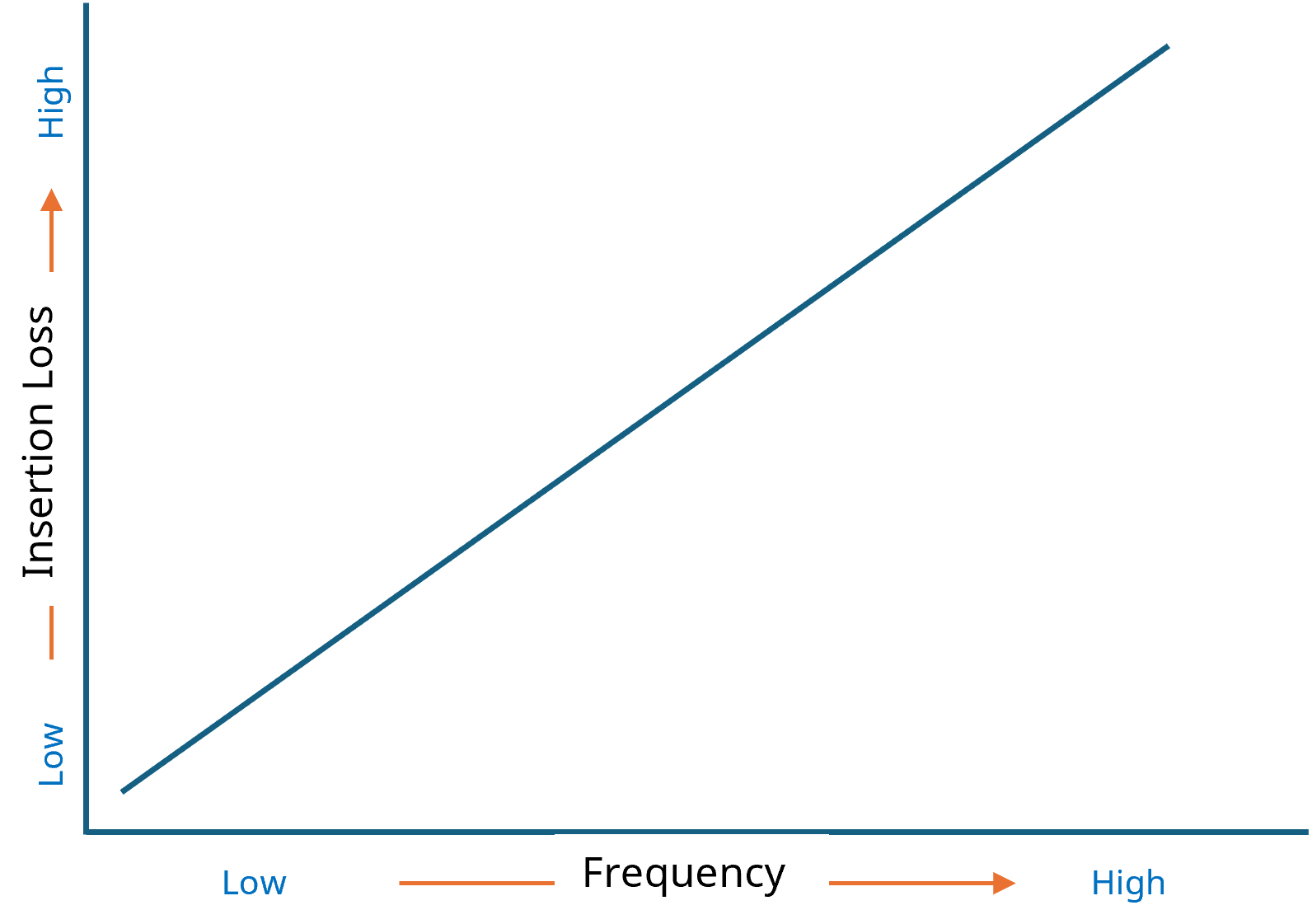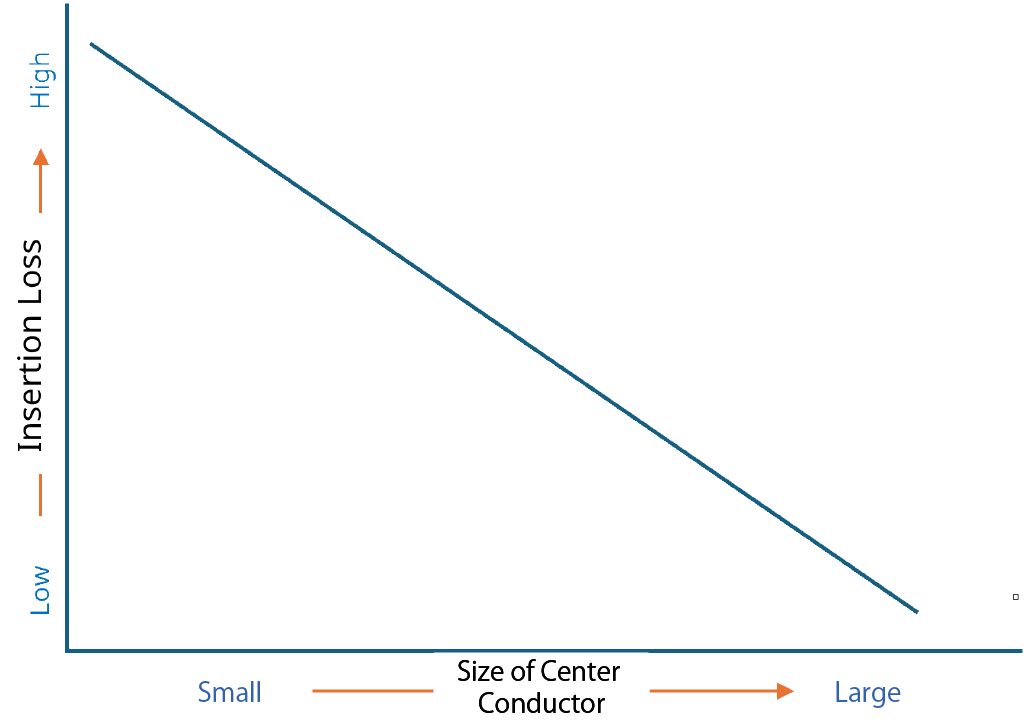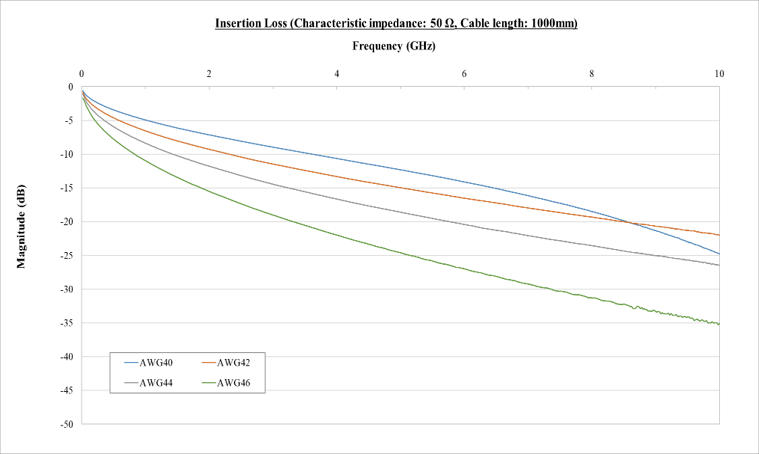Main Losses
Insertion Loss, Return Loss and VSWR are key performance indicators of High Speed Twinaxial and Micro-Coaxial Cable Assemblies. A high performance Micro-coaxial cable results in excellent signal integrity and reduced losses in high speed applications. At I-PEX we take pride to offer the high performance CABLINE Micro-coaxial and Twinaxial Cable Assemblies which are built by using automated assembly processes to ensure consistent high quality and low losses in each of the finished product.
Insertion Loss can be simply put as the amount of high frequency signal lost as heat in coaxial medium from transmitting to the receiving side. A thinner center conductor results in higher Insertion loss, similarly a longer coaxial cable also results in higher insertion loss. Insertion losses in coaxial cables are also increased with the increase in the overall cable length. Insertion Loss also increases with the higher frequencies while keeping the size of center conductor the same, due to Skin Effect. Skin effect is a phenomanon where most of high frequency AC signals crowd towards the surface of conducting material and efective cross sectional area of center conductor is reduced, thereby increasing the signal losses.
Learn more about Transmission Comparison between Micro-coaxial Harness Jumper and Low-transmission-loss Board Connections

|

|
Insertion loss performance of various sizes Micro-coaxial cables is shown in the Graph below for reference. Also, in general, a micro-coaxial cable offers a larger cross-sectional area of the center conductor to the electric fields as compared to FPC/FFC, keeping the impedance matched to the same value for both types, which minimizes the the insertion loss for Micro-coaxial cables.

Return Loss is the signal loss due to reflections from either transmitting and receiving side of coaxial medium. These reflections are caused by the impedance mismatch of all the components of coaxial medium including the connectors, cables and any of the interposer PCBs in the assembly. Like Insertion Loss, Return Loss also increases typically with the higher frequencies but does not change significantly with the length of the coaxial cables. Uniform and matched impedance of complete cable assembly result in low Return Losses.
The signal reflections due to impedance mismatch also result in signal attenuation and result in standing waves all across the coaxial cable. This phenomenon is called Voltage Standing Wave Ratio. VSWR is an important performance parameter of high frequency interconnect mediums, VSWR if high, can lead to significant signal losses resulting in data loss.
It is important to select the right size and length of coaxial cable harness to keep the insertion loss low. Also, it is critical to cut, strip, prepare and terminate the coaxial cables precisely in assembly harness to closely match the impedance of all components and minimize the Return Loss and VSWR in medium.
Additionally, the outer conductor of both Micro-coaxial and Twinaxial cables works as an electromagnetic shield so the electrical signal transmitted on the center conductor is less susceptible to electromagnetic waves (electromagnetic noise) from the outside. In addition, the shielding effect of the outer conductor also helps to reduce crosstalk between signal lines.
